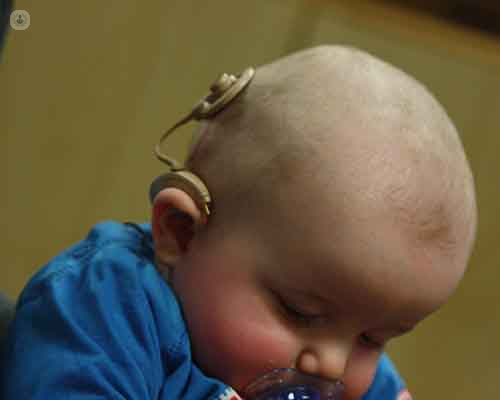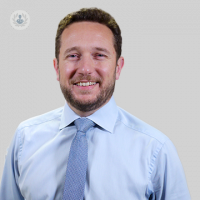Cochlear implants: how do they work?
Escrito por:Cochlear implants are a surgically implanted electrical device that stimulates the cochlear nerve, where the cochlea itself is unable to pick up sounds. The small device provides a sense of sound to a person who is profoundly deaf and is suitable for both adults and children.
Leading otolaryngologist and ENT surgeon Professor Simon Lloyd explains how the cochlear implants work and disccuses the advantages with the disadvantages.

How do cochlear implants work?
There are two components to the cochlear implant. The first is an implantable portion, which is an electrical package that goes underneath the skin behind the ear and from that comes an electrode array that has a number of electrodes along its length. This electrode array is placed within the cochlea and the various different electrodes along that array can stimulate different parts of the cochlea.
The second part of the cochlear implant is the processor, which is the external part that you can take on and off. It looks like a big hearing aid with the battery, the processor itself, and a hook that allows it to stay on the ear. There’s a wire that communicates with a coil and that coil has a magnet in it to keep it in place and so it communicates with the internal portion of the implant.
The implant itself picks up sounds through the processor. Those are then sent through to the internal portion and the sounds are divided up into different frequency bands. Each different frequency is sent to different frequency electrodes within the cochlea and those go on to stimulate the cochlear nerve, which gives the patient the sensation of sound.
What are the advantages and disadvantages?
The element of hearing is the ability to hear where sounds are coming from, which you can achieve with cochlear implants if you have two implants with one in each ear. If you only implant one ear, then you won't be able to identify where sounds are coming from. In adults in the UK, we are only able to implant one ear but in children, we are able to implant both. Therefore children should be able to develop normal ability to identify where sounds are coming from.
The main advantage of a cochlear implant is that you go from not being able to hear anything to be able to hear fairly normally and to be able to function in everyday life. This means that you can work and enjoy social activities. The downside is music appreciation as the implant is not capable of processing the complexity of the music.
There are obviously some inconveniences to having had a cochlear implant as you have to wear the external processor in order to get the benefit from the implant. This has some connotations from a cosmetic perspective. You can only hear when you're wearing it, so if you go swimming you might want to take the implant off.
There are actually new types of implant currently being developed to get around those issues and I don't think it will be long before we've got fully implantable cochlear implants that will allow people to hear even in the night or when they're swimming. There are also other developments where most cochlear implant companies now have waterproof covers for the external processor, so you can swim with the device if you want to.
If you would like to discuss cochlear implants, do not hesitate to book an appointment with Professor Lloyd.


